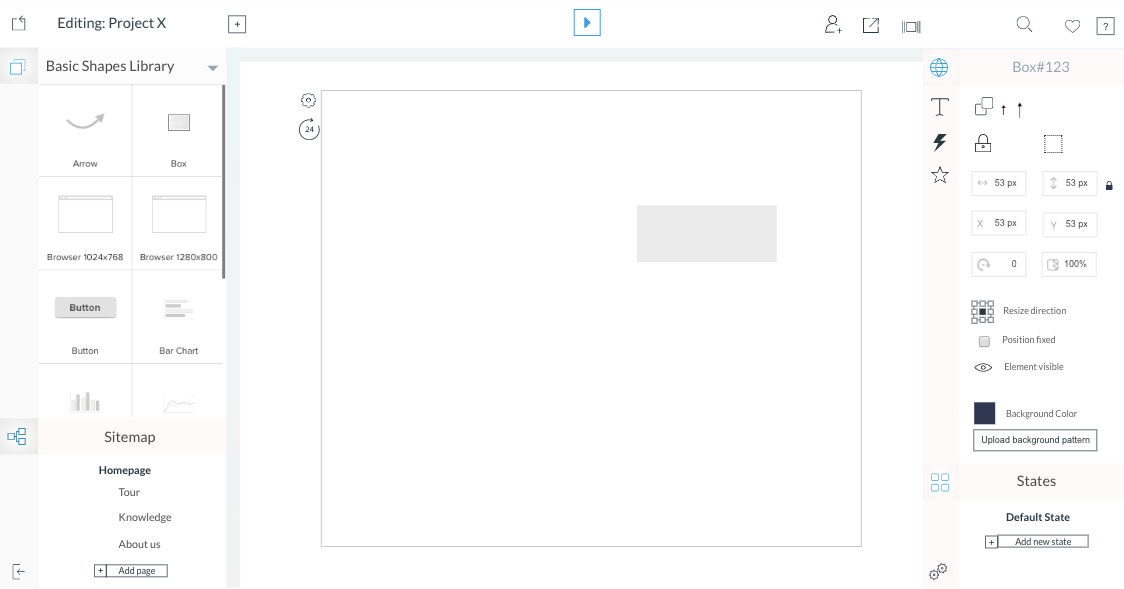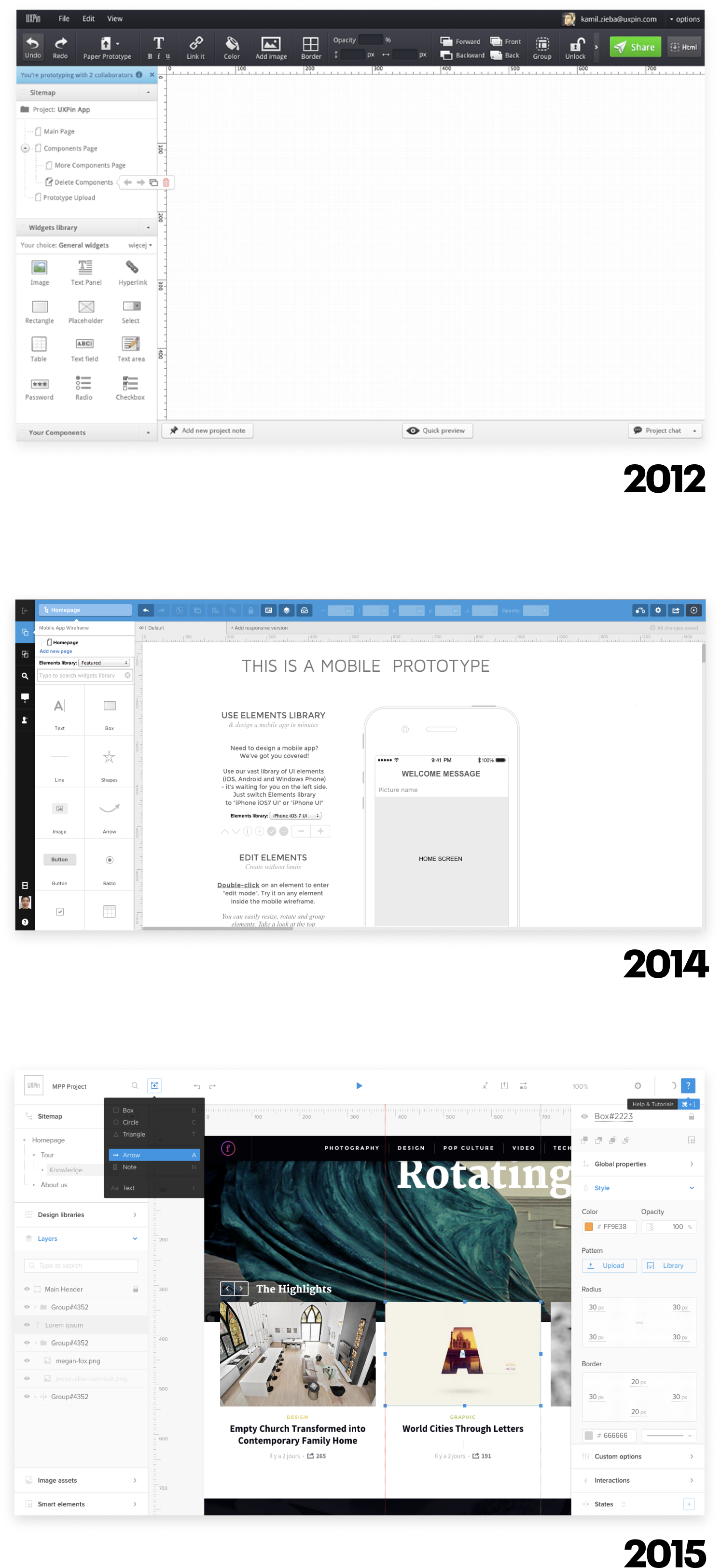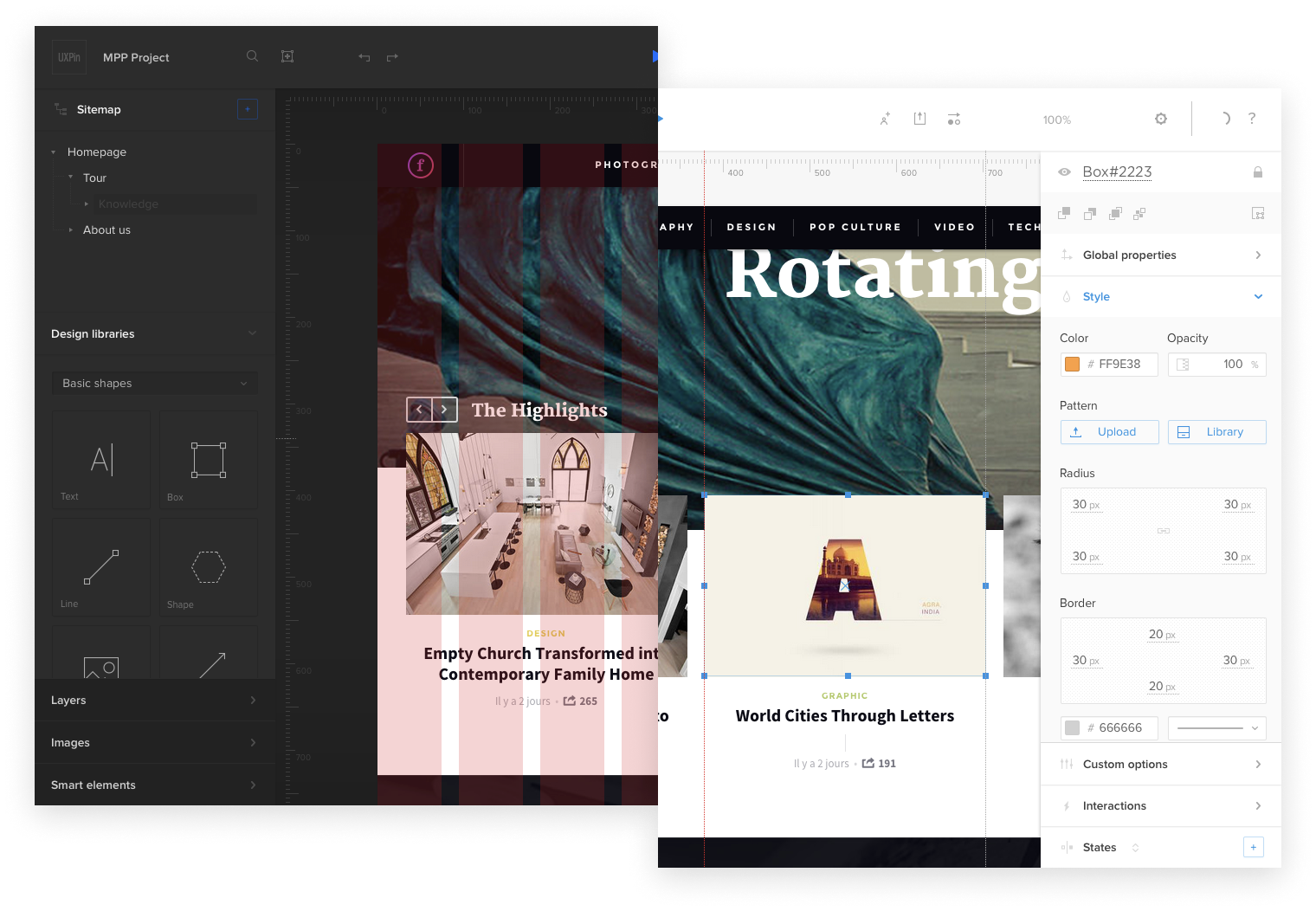Context
In 2015 design tools were cluttered, slow, and obtrusive. As absurdly, as it sounds, nobody on the design tools market was focused on improving the state of design software. Somebody had to change it. UXPin was well-positioned to make that change. After all, UXPin was started by designers.
Many things were wrong with the design tools of that era. According to our research, the most critical factors affecting the experience of users were: color-heavy interfaces, lots of redundant panels, lack of concern for the overall usability of the system, poor performance. All the leading design tools companies seemed satisfied with this state of affairs. We didn't want to comply.
At UXPin, we've decided to reject the status quo. We wanted to take the risk and do everything in our power to realize our mission. UXPin was started to connect design and engineering and helping the design industry progress. We could not achieve this mission without taking our design to the next level. In early 2015 we were ready to act.


